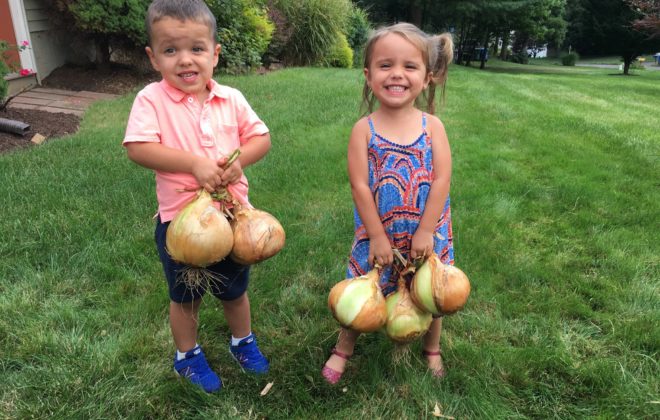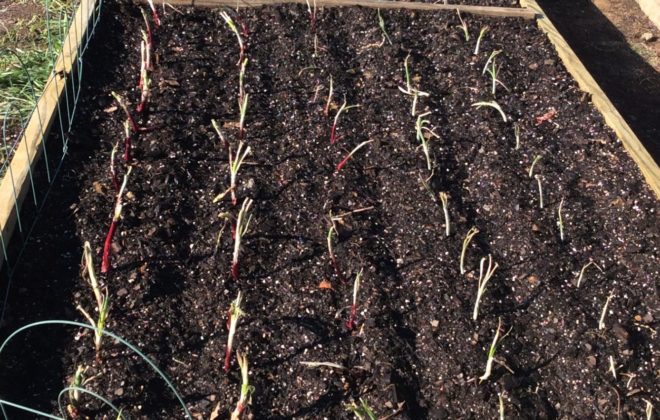Four Keys to Onion Growing Success
The 4 Keys to Onion Growing Success are Location, Soil Preparation, Water and Protection from the start. Be sure to follow these pillars for healthy, hearty plants!

Location
Full sun and good soil drainage are essential, so choose a location that gets plenty of direct sun. Orient the onion beds in the direction of the prevailing winds, so natural air circulation will keep the onion leaves dry. This helps protect the plants from fungal disease.

Soil Preparation
The best soil pH range for onions is between 6.2 and 6.8. Your agricultural extension service can test your soil for you, or you can buy a home test kit at your local garden center. If your soil is too acidic (pH below 6.2), mix in ground limestone, available at your garden center. If it’s too alkaline (pH above 6.8), add peat moss.
Onions grow best on raised beds or raised rows at least 4 inches high and 20 inches wide. The soil should be loose and crumbly. If it’s compacted, work in some compost to improve aeration and drainage.

Water
Onions need to be watered in when they get planted. They require about 20 to 22 inches of water per season to produce large bulbs. If they don’t get as much water, they will still produce bulbs but won’t get as big. Stop watering when the tops begin to fall over.
Water is key to completion of two growing cycles – when the plant takes up nutrients, and when the nutrients are converted to carbohydrates.
I like to use the “knuckle rule” to check the soil’s moisture level. Stick your finger in the ground up to your middle knuckle, and if you don’t find any moisture, water the plants thoroughly. This method of measuring soil moisture can be used throughout the growing process.
Always water your onion plants from below, rather than overhead. Overhead watering dampens the leaves and makes them vulnerable to fungus. It can also muddy the soil. Drip irrigation at the roots is an effective watering method, because it slowly provides water directly to the roots, keeping the leaves dry. Simple, reasonably priced drip irrigation kits are available at home supply stores.

Protection from the Start
Give your onions essential micronutrients to help them establish strong root systems at planting time with our 10-20-10 fertilizer. Regular applications of fungicide at the beginning of the growing process and every 10-14 days are essential to ward off diseases like downy mildew, white tip, botrytis, and other fungal issues. If you wait until problems appear, it’s too late to treat them. An organic option is available as well. Keep weeds from invading your garden with Treflan Granules.
For more than these Keys to Onion Growing Success, visit our Growing Aids page for more options.
Maximum Onions
Onion plants have specific needs, which are easy to meet with a little planning. When you order your onion plants, take stock to ensure you have the necessary fertilizers and fungicide treatments, so you won’t be caught short when the time comes to apply them. When your onions get what’s best for them at planting time and throughout their growing process, they should thrive.





my garden is in an area known to get high winds. i have heard that onions with wind damaged leaves can be trimmed back without much fruit damage. is this true and if so, how severe can they be trimmed? your thoughts?
Because wind damage will cause lesions in the leaves, we HIGHLY recommend a preventive fungicide program. Those areas of damage all bacteria and fungus to enter the plant and go to bulb. Bacteria getting to the bulb will cause rotting issues in storage. This is also why we shy away from any top trimming as it allows an easy avenue for bacteria and fungus to get to the center of the bulb.